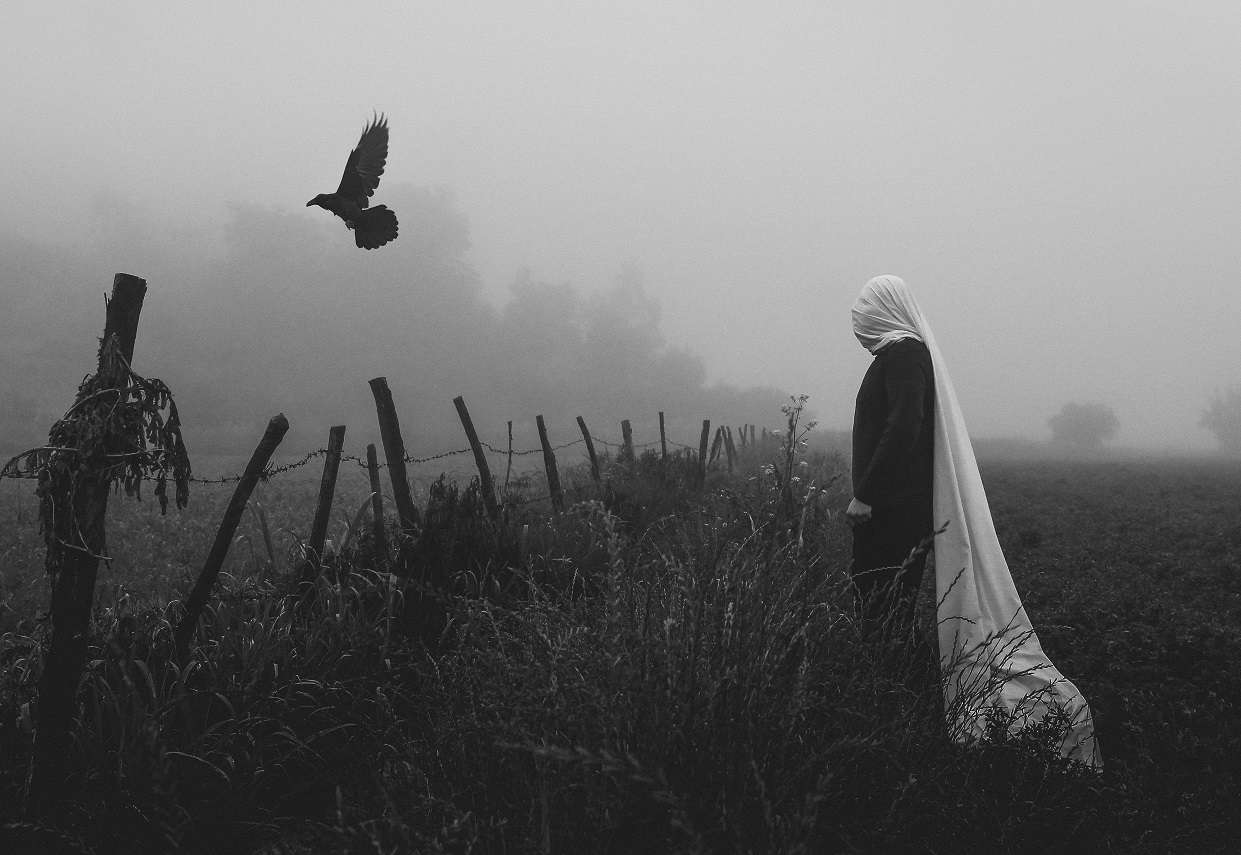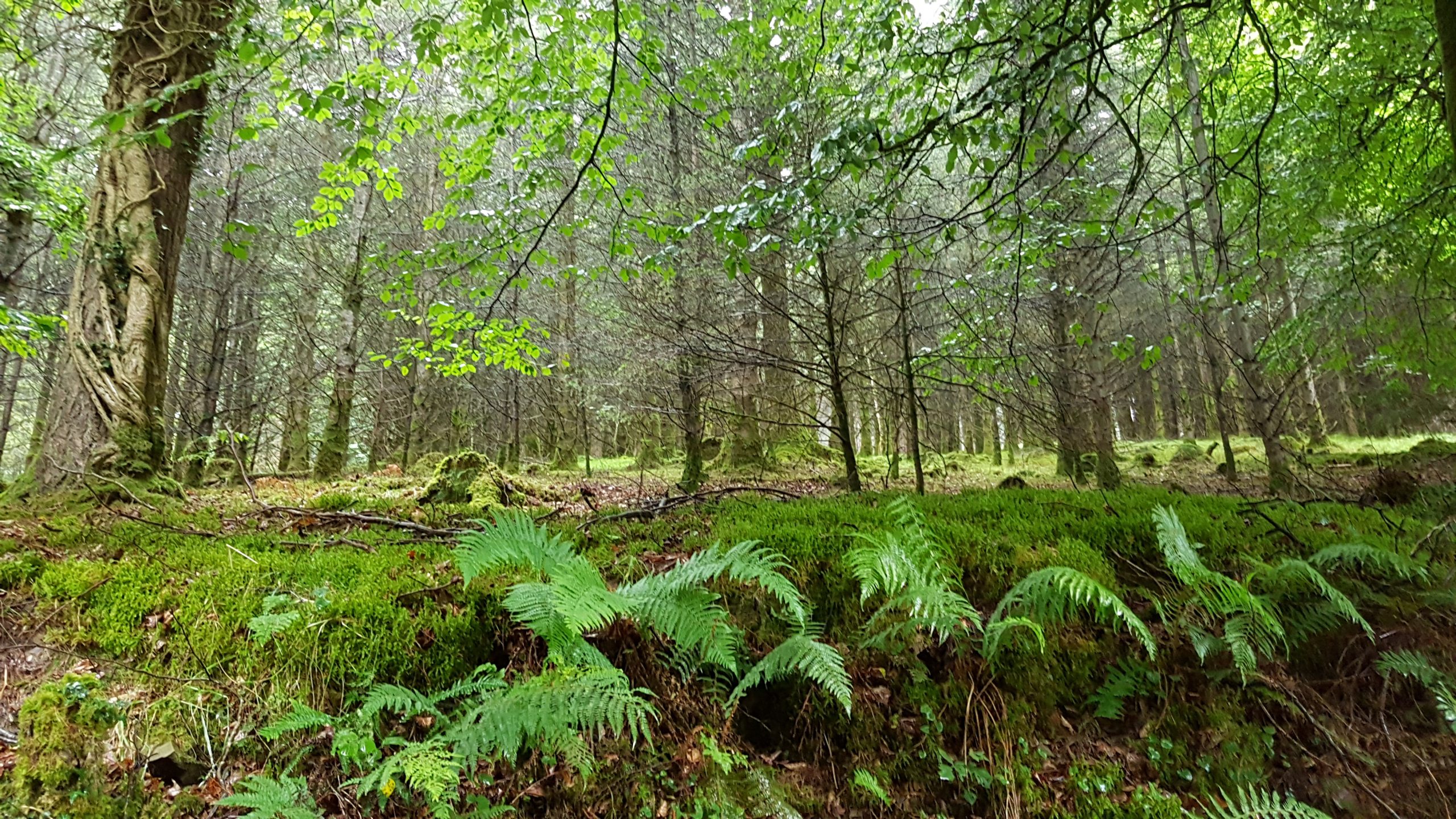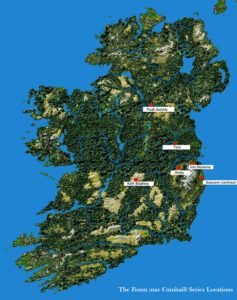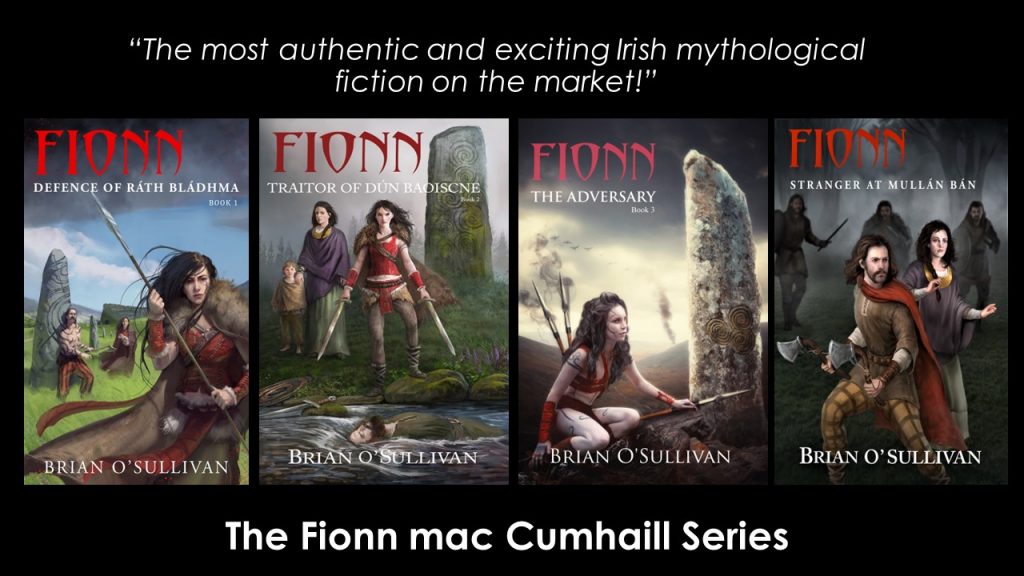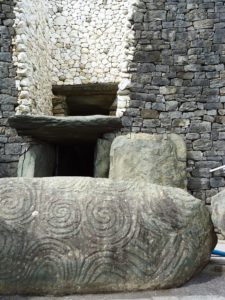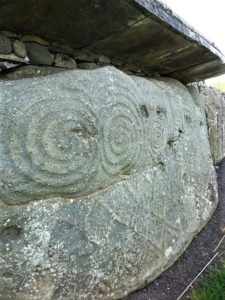
Although most people are familiar with the names of Irish military heroes as a result of commercial books and movies, there are a lot of names in Irish mythology that people aren’t so familiar with and this article from the Irish Times lists a few.
Many of the names here are problematic in that commentators often don’t know how to refer to them and, hence, the decision by academics in the past (and subsequently in this article) to refer to them as ‘Gods’.
The problem with mythology is that it generally involves a dominant culture summarising the belief systems of a repressed culture. Most early Irish mythology (and that of other countries) tended to be described and summarised by English writers/academics (the dominant culture controlling the money and the education in Ireland for several hundred years). Because the early English academics never really understood the full cultural significance of what they were talking about, they occasionally made the mistake of attributing deity status to names they came across which involved characters who had powers associated with them. The word for this process is ‘anthropomorphism’ and the pattern is well recognised today among modern academics (although someone clearly needs to let staff at the Irish Times, in on the secret).
To be fair, though, a lot of this stuff isn’t common knowledge and the Met Éireann idea of naming storms with these names makes far more sense than they probably realise.
The Irish Times article can be found here but it reads as follows:
**************************************
Holy God! How many of Ireland’s deities can you name?
Éanna Ó Caollaí
Met Éireann asked the public this week to submit suggestions for names for next season’s storms. The last such call-out resulted in thousands of entries, among them were personal names and the names of mythological figures from the Roman and Greek classics.
Of course, fans of TV shows such as Vikings and the Marvel superheroes films will be familiar with the likes of Thor, Odin and Loki. And as many classical deities relate to aspects of the weather it should be no surprise that such characters would feature in the list.
While the better known gods and warriors may have struck gold with Hollywood and their TV director cousins in recent years, the myths and stories associated with Ireland’s rich oral tradition have largely been ignored on the silver screen.
As with Greek and Roman gods such as Aphrodite, Mars, Zeus, Apollo and Ares, Ireland’s gods were immortal, supernatural beings who also had control over many aspects of life on earth.
Many readers will be familiar with Fionn Mac Cumhaill, Oisín, na Fianna, Tóraíocht Dhiarmada agus Ghráinne (The Pursuit of Diarmuid and Gráinne) and other tales from the Fiannaíocht or Fenian Cycle. In the main, these are stories of heroes and their exploits. Of course some have supernatural abilities but few are considered to be deities.
Many of Ireland’s immortal beings exhibit positive and negative human qualities such as strength, weakness, beauty, jealousy, greed and anger. Some have shape-shifting capabilities while others are associated with nature and natural phenomena such as the wind, the sea, seasons and the earth.
According to the 11th century book Lebor Gabála Érenn (the book of the taking of Ireland), Ireland was settled six times. The settlers were the people of Cessair, the people of Partholón, the people of Nemed, the Fir Bolg, the Tuatha Dé Danann, and the Milesians.
The majority of Ireland’s gods and supernatural figures seem to originate with three of those races – the Fomorians, the Fir Bolg and the Tuatha Dé Danann (people of the goddess Danú).
The Fomorians were generally hideous characters and displayed characteristics more associated with death and destruction. The Tuatha Dé Danann on the other hand had a far more positive image.
The Fir Bolg were descendants of Muintir Nemhidh (people of Nemed), the third race to occupy Ireland. Muintir Nemhidh abandoned the country but the Fir Bolg returned before they in turn were overthrown by the Tuatha Dé Danann.
While the Fomorians and the Tuatha Dé Danann were essentially enemies, they had a complicated relationship and some intermarriage did take place resulting in some interesting intra-familial tensions at times.
So, how many of Ireland’s Gods are you familiar with?
The following is a brief selection of some gods and other prominent figures from Ireland’s mythological past. Who knows, some might be a good fit for the Met Éireann list.
Balor (Balór)
Who better to start with than Balor, a member of the Fomhóraigh (or Fomorians). Fomorian gods often represent the destructive power of nature and are sometimes depicted with the body of a human and the head of a goat. A striking figure, Balor was himself a formidable character.
Sometimes referred to as Balór Bailc-Bhéimneach (Balor of the mighty blows) or Balor Birugderc (Balor of the piercing eye, aka Balor of the Evil Eye), this Fomorian king was the son of Buarainech, husband of Cethlenn, and grandson of Neit. He had an evil eye in the centre of his forehead which, when opened, wrought destruction all around. He was based on the Fomronian stronghold of Tory Island off the coast of Co Donegal and was the bane of all in Ireland. Balor was killed by his grandson Lugh Lámhfhada at Cath Dédenach Maige Tuired (the last battle of Magh Tuiread) when the Tuatha dé Danann broke free of Fomorian rule. According to one legend, when he fell face down on the ground, his eye burned a hole deep into the ground . This hole filled with water to become a lake and is known to this day as Loch na Súil (lake of the eye) in Co Sligo.
The Morrigan (Morrigú or Mór-Ríoghain)
Associated with war but also said to have protective qualities, the Morrígan is a war goddess of the Tuatha Dé Danann with a shape-shifting ability who often takes the form of a crow.
She has the power to change the course of a battle by instilling fear and confusion into opponents and bravery in her warriors. As is often the case with many Celtic gods, the Morrigan is often referred to as a triadic deity where three individuals (Badb, Macha and Nemain) are worshipped as one. Other characters sometimes associated with the Morrigan include Eriu, Banba and Fódla. Most famously perhaps, the Morrigan feature in the death of Cú Chulainn during the Battle of Muirthemne. Oliver Shepard’s sculpture of the death of Cú Chulainn featuring a crow standing on his shoulder can be seen in the GPO.
Eithniu (Eithne)
The only daughter of Balor and mother of Lugh, Eithniu was locked into a tower by her father after he heard a prophecy foretelling his death at the hands of her son.
She was freed from the tower by a member of the Tuatha Dé Danann and subsequently gave birth to three sons who Balor then attempted to drown. One, named Lugh, survived and was raised by Manannán (the sea god). Lugh later became king of the Tuatha Dé Danann and ultimately killed Balor in battle.
Lugh
Son of Eithniu, he is also known as Lugh Lámhfhada (Lugh of the long arm) and Samildánach (master of many crafts). One of the foremost figures in Irish mythology, Lugh is member of the Tuatha Dé Danann and is known as a warrior, a king and master craftsman. He is said to have invented Fidchell (which is where the Irish word for chess – ficheall – originates). He carries the fiery Sleá Luin Lugh, one of the Four Treasures of the Tuatha Dé Danann (brought from the four great cities of Murias, Falias, Gorias and Findias) and he is accompanied in battle by his hound, Fáil Inis, which besides being invincible in battle also has the power to turn the water it touches into wine.
Lugh is reputed to be the divine father of Cú Chulainn and the maternal grandson of Balor whom he beheads in Cath Dédenach Maige Tuired (the last battle of Magh Tuiread) when the Tuatha dé Danann broke free of Fomorian rule. The festival of Lughnasa, marking the beginning of the harvest, bears his name.
Danú
Sometimes referred to as Ana, Anu or Annad, Danú was the divine mother of the Tuatha Dé Danann, of the Gods and of the earth. The Tuatha Dé Danann take their name directly from her. Danú is considered to be the mother goddess of Ireland and is the personification of nature, fertility, wisdom and strength.
Dagda (An Dágdha)
The Dagda was considered to be a father figure and creator of life. Also known as Ruad Rofhessa (Red/Mighty One of Great Knowledge) and Eochaid Ollathair (horseman, great father). Son to king of the Fomorians, Elatha, he was brother to Ogma and Lir.
One of the kings of the Tuatha Dé Danann, the Dagda had control over life and death and carried the lorg mór, a long staff with magical qualities which could kill but could also be used to restore life. While he was a formidable warrior, he was also considered to be a protector. He carried a bottomless cauldron, known as the “coire ansic”, which never ran empty.
He also had a harp – another one of the Four Treasures of the Tuatha Dé Danann – which was known as the “Daur da Bláo” (the Oak of Two Blossoms). It was also sometimes referred to as the “Coir Cethar Chuir”, the Four Angled Music, and with it, he could control the seasons and any man’s emotions. The Dagda was an important deity as he played an important role in the invasions of Ireland which are portrayed in the 11th century book Lebor Gabála Érenn (the book of the taking of Ireland).
Ogma (Oghma)
Another member of the Tuatha Dé Danann, Ogma is reputed to be the inventor of Ogham, the early Irish alphabet used on stone monuments that can still be seen around Ireland.
He is sometimes referred to as the god of eloquence and learning. But as with most other gods and heroes of his ilk, Ogma was also a fearsome warrior. He was made champion of Nuada and then fought as Lugh’s champion in Cath Maige Tuired (the first Battle of Magh Tuiread) when the Tuatha Dé Danann won Ireland from the Fir Bolg.
Brigid (Bríg)
Associated with the spring season, fertility and healing, Brigid is the daughter of Dagda. As a triple deity she had three main attributes: poetry, healing and smithcraft. As with many Christian festivals and saint days in Ireland pre-Christian traditions were adopted or co-opted to proselytise the population. The feast day of Saint Brigid (Lá Fhéile Bríde) falls on February 1st, the same day as Imbolc, the pre-Christian feast day celebrating the beginning of spring which was associated with the goddess.
Ériu
Ériu was the daughter of Delbáeth and Ernmas of the Tuatha Dé Danann and along with her two sisters Banba and Fódla (whose names were often used as poetic names for Ireland) is often represented as the goddess of Ireland and from whom the name Éire is derived.
She was purportedly married to Mac Gréine (Céthur and grandson of Dagda). She is also said to have been the lover of the Fomorian prince Elatha and was also associated with Lugh.
Fódla
Fódla was also the daughter of Delbáeth and Ernmas of the Tuatha Dé Danann. Along with her sisters Banba and Ériu, she was one of the tutelary goddesses of Ireland. When the Milesians invaded Ireland from Galecia, legend has it that she and her sisters demanded that their name should be given to the country.
While Fódla and Banba sometimes feature as literary figures representing Ireland in Irish poetry and literatire, Éiriú won this particular contest. In Tochomlad mac Miledh a hEspain i nErind (The Progress of the Sons of Mil from Spain to Ireland) Fódla is married to Mac Cécht and is the reigning queen of Ireland in the years that he also rules as king.
Medb (Meadhbh or Médhbh)
Medb was the Queen of Connacht. She ruled from Cruachan, the traditional capital of Connacht and one of the six royal sites of Ireland.
She is best known for her role in Ireland’s epic tale The Táin Bó Cuailgne (Cattle Raid of Cooley). She is said to be buried in Miosgán Médhbh, one of Ireland’s largest cairns, on the summit of Knocknarea in Co Sligo and is said to have been buried standing up, facing her enemies in Ulster.
Lir
Lir was associated with the sea. According to legend, he married Aoife after his first wife died. She didn’t get on with his children, Fionnula, Aodh, Conn and Fiachra and soon grew jealous of them. She took the children to Lough Derravaragh in Co Westmeath for a swim one day and cast a spell (geasa) on them. They were transformed into four swans and were condemned to their fate for 900 years.
When Lir discoverd what Aoife ha done he banished her and spent the rest of his days talking to his children from the side of the lake. Many will be familiar with the Clann Lir statue in Dublin’s Garden of Remembrance. The statue, by sculptor Oisin Kelly. represents the rebirth of the nation.
Nuada (Nuadu)
Also known as Nuada Airgetlám (silver arm) Nuada was the first king of the Tuatha Dé Danann and is said to be the great grandfather of Fionn Mac Cumhaill. Nuada carried the Claidheamh Soluis (sword of light), another of the Tuadtha Dé Danann’s Four Treasures.
Nuada lost his arm during the First Battle of Moytura ina battle with Streng, a champion of the Fir Bolg (who preceded the Tuatha de Danann in Ireland). Their king, Eochaid Mac Erc, was killed in the battle and the Tuatha dé Danann won the war. According to Tuatha Dé Danann custom, the king had to be physically perfect to hold his position and, despite his popularity wth his subjects, the loss of a limb prevented Nuada from continuing as king and he had to step down. His arm was later replaced with a silver arm by Dian Cecht, the Tuatha Dé Danann’s healer.
An Cailleach Bhéara
A counterpart to Brigid, An Cailleach Bhéara is referenced in Gaelic mythology across Ireland, Scotland and the Isle of Man. The word cailleach translates as hag or veiled one and she was generally considered to be a weather deity associated mostly with the winter months.
According to Leabhar Mór Leacain (The Book of Lecan c.1400 ad) she was worshipped as a goddess of the Corcu Duibne people of Kerry. She is also associated with several passage tombs in Ireland, along with topographical features such as Ceann Caillí (Hags Head, Cliffs of Moher) and Sliabh na Caillí (the highest point in Co Meath) and other locations throughout Ireland and Scotland. She is credited in Scotland as having created mountains and carries a hammer to help her shape the hills. Ruling during the dark half of the year, an Cailleach Bhéara comes to life in Samhain (Nov 1st) and is active until Bealtaine (May 1st). She features in Mise Éire, the poem by the revolutionary leader of the Easter Rising Patrick Pearse. The song was performed by Sibéal Ní Chasaide during the centenary celebrations in 2016.
